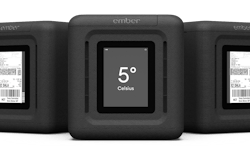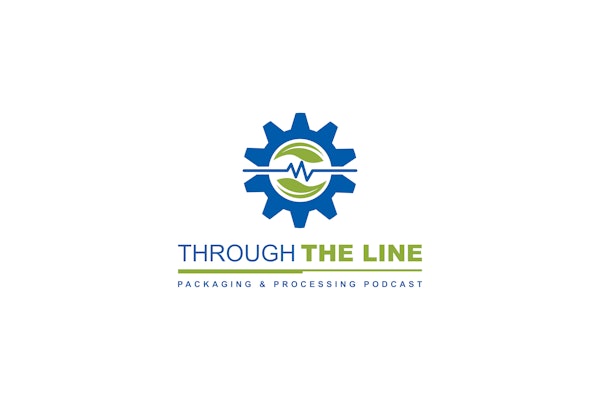Quick hits:
- Colgate-Palmolive has for a few years been developing a recyclable toothpaste tube based on HDPE with EVOH barrier that acts more like a film than a rigid container.
- It’s finally hit the market, and Colgate is letting consumers know with prominent, on-pack messaging encouraging people know to “Recycle me!”
- Switching gears, I was at the Smithers Sustainable Packaging in the US event, and an interesting application caught my eye: molded-fiber caps and closures that are about to hit the market in a branded, commercialized application (to be named later).
- What unites these two dissimilar applications? Both needed to rethink barrier layers in their bid to move to a more sustainable, recyclable format.
- Live from Smithers' Sustainability in Packaging US: Paper Cap/Closures Soon to be a Reality?
- Colgate Rolls Out Monomaterial Recyclable Tube, Tells People to "Recycle Me!"
 | Read the transcript below: |
Hello, I’m Matt Reynolds, editor of Packaging World, here with another episode of Take Five.
We’ve been closely following Colgate-Palmolive’s roll out what it says is a breakthrough tube in the U.S.
The company has been building up to recyclable toothpaste tube for some time now, but it's finally a commercialized reality. To alert consumers that the tube is now recyclable, Colgate is including on the tube’s front panel a prominent “Recycle Me!” message as well as a stylized image of three tubes in the shape of the well-known “chasing arrows” recycle symbol.
In a virtual press conference Packaging World attended a couple of weeks ago, Colgate reminded us that its brand found in more homes than any other, so of course it wants to lead in waste reduction and, in particular, making toothpaste tubes a part of the circular economy. The “Recycle Me! Tube” is designed to educate and engage consumers and the recycling community, who are both essential to progress.
Colgate-Palmolive’s tube is the first to be recognized by external authorities, specifically the Association of Plastic Recyclers, as recyclable. It’s made from HDPE, the same plastic used for milk and detergent bottles. Removing the aluminum layer that has for so many years served as the product protection component was a key to making it recyclable. Replacing aluminum as a barrier material is EVOH. Multiple layers of blown HDPE are extrusion laminated to a blown coextrusion that includes EVOH. The recyclable tubes for the U.S. market are made in Colgate’s Morristown, Tenn., facility. And according to Colgate-Palmolive, the recyclable tube has on average an estimated 25% smaller carbon footprint and a 40% lower water footprint.
Two additional points are worth noting. First, Colgate is sharing its recyclable tube know-how with other companies, including competitors. This decision was made in recognition of the simple fact that for recyclable tubes to succeed, it requires a critical mass of tubes on shelf that meet recycling standards.
Second, Colgate-Palmolive is developing a recyclable tube pilot program in partnership with peer companies and working with a leading MRF (Municipal Recycling Facility) and re-processor in the U.S. The pilot will focus on one county or municipality to test how educational efforts can build tube recycling rates and assess the quality of the tube material that is collected for reprocessing. The data will be used to define easy-to-action best practices for tube recycling to be shared with communities and recyclers around the country.
Switching gears, another pet topic here at PW has been the promising, but slow, and stop and start advent of paper bottles. Going beyond that, what about the possibility of a paper cap? It might be closer to reality than you think.
I was at Smithers Sustainable Packaging Conference in the US event in Chicago last week, and there was a lot to take in.
The most poignant moment for me came during a panel discussion from Ian Lifshitz a VP and director of Sustainability among other roles at Asia Pulp & Paper. Ian said that he has recognized a shift in recent years. He said, and I’m summarizing: We used to talk about what we should be doing, and what we could be doing, and these conferences. Today? we’re talking about what we are doing. And perhaps more importantly than that, the right people are at the table now, including marketing, CEOs and CFOs.
There were a lot of examples, but one really caught my attention: Blue Ocean Closures, a Swedish startup that seeks to disrupt the beverage, specialty food, and cosmetics packaging markets by introducing a high-end, molded fiber closures or screw caps for bottles that are both both recyclable and ocean biodegradable.
Not so different than what we discussed with the Colgate recyclable tube, the million-dollar question is the company’s approach to barrier properties, considering the closure is destined for liquid beverages. Recognizing that it’s not the perfect approach, rather the “low-hanging-fruit” approach that will advance the concept and situate it for a better solution in the future, the company has opted for a thin top-seal plastic liner, the same that’s used in metal closures. This would be about 2 to 4% of the material in each cap.
According to CEO Lars Sandberg, “It just gives us the freedom to move to market.”
The low-hanging-fruit approach extends to the closure itself, which is made of high quality, readily available virgin fiber instead of recycled, shorter-strand fiber. But the virgin fiber comes from FSC-certified sources, and the company seeks to potentially move into recycled fiber at some point. Sandberg said to expect further innovation as it the company grows. But at the moment, the start-up seeks to remove as much complexity from the system as possible to begin to scale around its core concept.
A key question for Sandberg came from the audience, from a gentleman from PepsiCo. Would molded fiber closures be able to run on existing equipment, like high-speed capping infrastructure that’s already installed? Sandberg said the goal was for this to be a drop-in, 1::1 replacement, with maybe a few tweaks to accommodate the differences in material finish. That’d be something, if that occurs.
Blue Ocean Closures was just one example of interesting projects that years ago seemed distant and futuristic, and now are approaching commercial viability. We’ll be following this one as it heads towards a commercial launch.
But that’s all the time we have for this Take Five.






















